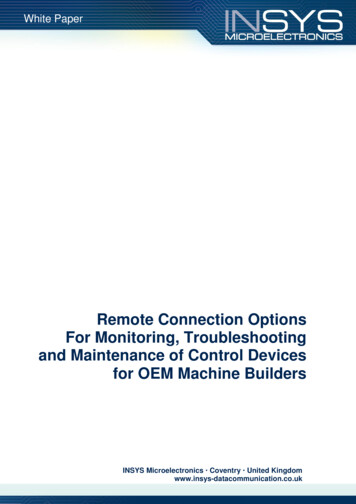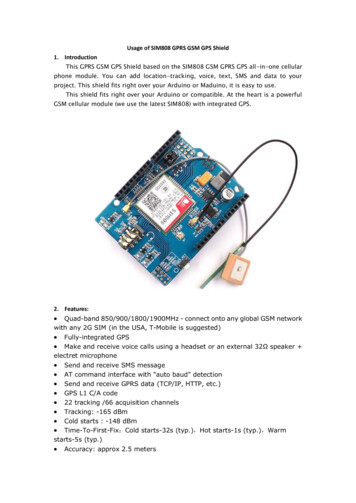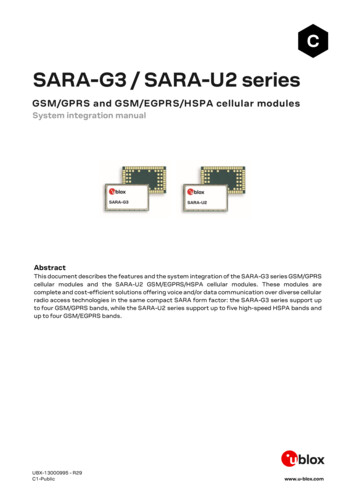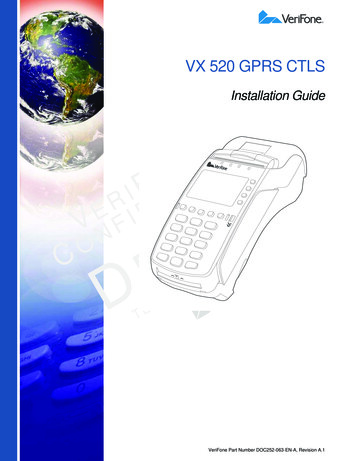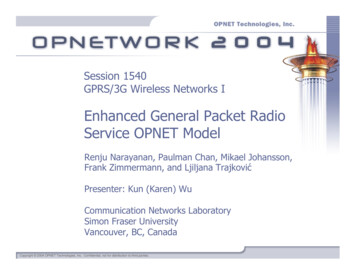
Transcription
Session 1540GPRS/3G Wireless Networks IEnhanced General Packet RadioService OPNET ModelRenju Narayanan, Paulman Chan, Mikael Johansson,Frank Zimmermann, and Ljiljana TrajkovićPresenter: Kun (Karen) WuCommunication Networks LaboratorySimon Fraser UniversityVancouver, BC, CanadaCopyright 2004 OPNET Technologies, Inc. Confidential, not for distribution to third parties.
Road map IntroductionGPRS overviewBase Station SubsystemLogical Link Control layerCell updateOPNET model implementationSimulation scenarios and resultsConclusionsFuture workCopyright 2004 OPNET Technologies, Inc. Confidential, not for distribution to third parties.2
Introduction General Packet Radio Service (GPRS) is a packet-switchedwireless network technology based on Global System forMobile Communications (GSM). GSM and GPRS are standardized by the EuropeanTelecommunications Standards Institute (ETSI). GSM employs circuit switching technology with a datatransmission rate of 9.6 kbps. GSM frequencies used in Europe: 900 MHz and 1800 MHz 1900 MHz in North America. GPRS offers data transmission rates up to 171.2 kbps.Copyright 2004 OPNET Technologies, Inc. Confidential, not for distribution to third parties.3
GPRS overviewMain Components of a GPRS network: Mobile Station (MS) Base Station Subsystem(BSS) Serving GPRS Support Node(SGSN) Gateway GPRS Support Node(GGSN)Copyright 2004 OPNET Technologies, Inc. Confidential, not for distribution to third parties. Packet Data Network (PDN) Registers Home Location (HLR) Visitors Location (VLR) Equipment Identity (EIR)4
Base Station Subsystem Base Station Subsystem (BSS) consists of Base TransceiverStations (BTSs) or Base Stations (BSs) anda Base Station Controller (BSC). The BSC manages the Radio Resource (RR) functions: evaluating measurement results from MSs and BTSs controlling handover and power for GSM connections. The BTS enables wireless connections of MSs to the networkover the air interface.Copyright 2004 OPNET Technologies, Inc. Confidential, not for distribution to third parties.5
Logical Link Control layer LLC, a sub-layer of layer 2 in the ISO 7-layer reference model,conveys information between layer-3 entities in the MS and theSGSN. Two modes of operation supported by LLC: Unacknowledged peer-to-peer operation, known asAsynchronous Disconnected Mode (ADM) Acknowledged peer-to-peer operation, called AsynchronousBalanced Mode (ABM).Copyright 2004 OPNET Technologies, Inc. Confidential, not for distribution to third parties.6
Internal LLC layer structure SNDCP: Sub Network DependantConvergence Protocol TOM: Tunneling Of Messages SMS: Short Message Service GRR: GPRS Radio Resource BSSGP: Base Station Subsystem GPRSprotocol RLC/MAC: Radio Link Control/MediumAccess ControlCopyright 2004 OPNET Technologies, Inc. Confidential, not for distribution to third parties.7
LLC components and functions Logical Link Management Entity (LLME) performs parameterinitialization, error processing, and connection flow controlinvocation. Logical Link Entities (LLEs) control the information flow ofindividual connections. Multiplex Procedure: when a frame is transmitted, it generates and inserts aFrame Check Sequence (FCS), performs frame ciphering,and provides contention resolution between LLEs. on frame reception, the multiplex procedure performs theframe decipher function and sends it to the appropriateLLE after checking the FCS.Copyright 2004 OPNET Technologies, Inc. Confidential, not for distribution to third parties.8
LLC frame format Each LLC frame consists of: header (address and control fields) information field trailer (FCS). Address field: Protocol Discriminator (PD) bit indicates whether a frame isan LLC frame or not Command/Response (C/R) bit identifies a frame as either acommand or a response Service Access Point Identifier (SAPI) identifies a point atwhich an LLC service is provided by an LLE to a layer-3entity.Copyright 2004 OPNET Technologies, Inc. Confidential, not for distribution to third parties.9
LLC frame format Control field identifies the frame type. Four types of control field formats: confirmed information transfer(I format) supervisory functions (S format) unconfirmed information transfer(UI format) control functions (U format). Information field consists of 140 to 1,520 bytes dependingon the format specified in the control field. Frame Check Sequence field consists of a 24-bit cyclicredundancy check (CRC) code. The code is used to detectbit errors in the frame header and information fields.Copyright 2004 OPNET Technologies, Inc. Confidential, not for distribution to third parties.10
Cell update procedure The cell update procedure has to be performed when the MSmoves to the coverage area of another BTS with betterreception. The MS periodically measures the signal levels on theBroadcast Control Channels (BCCHs) of the serving BTS andthe neighboring BTSs. The cell update can be controlled by either the MS or thenetwork. Three modes of cell update are defined: NC0: MS performs autonomous cell reselection, but doesnot send measurement reports to the network NC1: MS performs autonomous cell reselection andperiodically sends measurement reports to the network NC2: Network controls cell reselection procedure.Copyright 2004 OPNET Technologies, Inc. Confidential, not for distribution to third parties.11
OPNET model implementation: original model The original GPRS model consisted of: Mobile Station (MS) Serving GPRS Support Node (SGSN) Home Location Register (HLR) Gateway GPRS Support Node (GGSN) Sink representing an external packet data network.Copyright 2004 OPNET Technologies, Inc. Confidential, not for distribution to third parties.12
OPNET model implementation: enhanced model Additions and changes to the original GPRS model(OPNETWORK 2003): wireless connections instead of wired links multiple mobile nodes with trajectories implementation of the Base Station Subsystem implementation of LLC layer.Copyright 2004 OPNET Technologies, Inc. Confidential, not for distribution to third parties.13
Implementation of LLC Additions to the node model of the MS and SGSN: LLME: Logical LinkManager Entity LLE1: ADM operation forLogical Link Entity 1(used for GMM) LLE3: ADM operation forLogical Link Entity 3(used for SNDCP) MUX: (De-)multiplexesmessages from LLE1,LLE3, and Lower Layers,dummy implementationof RLC.Copyright 2004 OPNET Technologies, Inc. Confidential, not for distribution to third parties.14
Implementation of LLC LLC packet format used in our implementation contains anew field, Temporary Logical Link Identifier (TLLI), notspecified in the LLC specification. This field was added to enable functionality in an incompleteprotocol stack.Copyright 2004 OPNET Technologies, Inc. Confidential, not for distribution to third parties.15
Simplifications: We only implemented: unacknowledged Asynchronous Disconnected Mode (ADM) two Logical Link Entities, LLE1 and LLE3 LLC in the SGSN and MS are identical. LLC does not implement the correct service primitives forcommunication between LLC and lower layers because BSSGPand MAC are not implemented in this OPNET model. Frame ciphering and error control are not implemented.Copyright 2004 OPNET Technologies, Inc. Confidential, not for distribution to third parties.16
Base Station Controller Routes packets from the BTSs to the SGSN and from theSGSN to the BTSs based on the stream number of theincoming packet and the TLLI, respectively.Copyright 2004 OPNET Technologies, Inc. Confidential, not for distribution to third parties.17
Base Transceiver Station Routes packets from the MSs to the BSC and from the BSCto the MSs based on the channel/stream number of theincoming packet and the TLLI, respectively.Copyright 2004 OPNET Technologies, Inc. Confidential, not for distribution to third parties.18
Base Transceiver Station BTS in this model can support 15 MSs. BTS has a radio transmitter-receiver pair with 15 channels. MSs cannot share the same frequency/channel, as theRLC/MAC layer is not implemented. 16th channel was added to the wireless transmitter to representthe Broadcast Control Channel (BCCH). Every 5 seconds, the BTS transmits a packet through the BCCHto allow power measurements in the MSs.Copyright 2004 OPNET Technologies, Inc. Confidential, not for distribution to third parties.19
Base Transceiver Station process model init: computes and sets the frequency attributes ofthe transmitter and receiver channels upload: forwards packets to the BSC download: routes packets to the MSsCopyright 2004 OPNET Technologies, Inc. Confidential, not for distribution to third parties.20
Cell update The MS performs autonomouscell reselection (NC0) based onthe power level measurements ofthe 6 adjacent BTSs. Power Monitor was added to theMS node model to measure thepower level of the incomingsignals and to transfer packets toand from the lower layers. The power levels from theincoming packets are obtainedusing the six statistical wiresconnected from the receiver tothe Power Monitor.Copyright 2004 OPNET Technologies, Inc. Confidential, not for distribution to third parties.21
Cell update: Power Monitor process model init: initializes the power table to -1 power: stores the received powerstatistics in the table according totheir channel/stream number update: identifies the channel withthe highest power. It sets thetransmitter and receiver frequenciesand performs the cell update bysending an empty LLC frame (FlushLLC) to the SGSN packet rec: forwards the packetsreceived from the Lower Layers tothe transmitterCopyright 2004 OPNET Technologies, Inc. Confidential, not for distribution to third parties.22
Verification of LLC implementation A simulation scenario is configured to set up a data connection,transfer data, and then disconnect the data connection.Copyright 2004 OPNET Technologies, Inc. Confidential, not for distribution to third parties.23
Verification of LLC implementation The collected statistics indicate that a packet has been usingeither Service Access Point (SAP) 1 or 3 when traversing theLLC layer. Initial and final control messages are sent through LLE1 anddata traffic in between is sent through LLE3. The simulation proves that the control messages (GMM) anduser data (SNDCP) are correctly multiplexed onto separateSAPs.Copyright 2004 OPNET Technologies, Inc. Confidential, not for distribution to third parties.24
Verification of BSS implementation We simulated three different scenarios: single MS connected to BTS with a wired link and withouta BSC wireless scenario without a BSC wireless scenario with a BSC. In order to verify the implementation of the wirelessconnection and the BSC, we measure the packet end-to-enddelay from the mobile station to the sink.Copyright 2004 OPNET Technologies, Inc. Confidential, not for distribution to third parties.25
Verification of the BSS implementation: results The end-to-end delay obtained when the MS was connected tothe SGSN through a BSC is the largest. The reason is the delay imposed by the BSC in receiving,processing, and routing packets.Copyright 2004 OPNET Technologies, Inc. Confidential, not for distribution to third parties.26
Simulation of cell update with 1 MS: project modelCopyright 2004 OPNET Technologies, Inc. Confidential, not for distribution to third parties.27
Simulation of cell update with 1 MS: results Power received by the MS: Throughput at the BTSs: Simulation results verify that the cell update has beenperformed successfully.Copyright 2004 OPNET Technologies, Inc. Confidential, not for distribution to third parties.28
Simulation of cell update with 2 MSs: project model The MS mobile node 1 moves between Base Station 0 andBase Station 1 only.Copyright 2004 OPNET Technologies, Inc. Confidential, not for distribution to third parties.29
Simulation of cell update with 2 MSs: results Power received bymobile node 1:Copyright 2004 OPNET Technologies, Inc. Confidential, not for distribution to third parties. Channel 1 receiverthroughput at the BTSs:30
Simulation of cell update with 2 MSs: results Channel 0 receiver throughput at the BTSs andtransmitter throughput of mobile node 0: Simulation results verifythat the channel allocationand routing at the BTSsare implemented correctly. Cell update works in thepresence of multiple MSs.Copyright 2004 OPNET Technologies, Inc. Confidential, not for distribution to third parties.31
Conclusions We implemented LLC layer and Base Station Subsystem(BSC and BTS) in an existing OPNET model for GPRS. We made several modifications to the existing OPNETmodel and implemented an autonomous cell updateprocedure. Various simulation scenarios demonstrated that theimplementations were done correctly. The enhanced GPRS model (release 10.0.A PL2) has beenuploaded to the OPNET Contributed Model Depot.Copyright 2004 OPNET Technologies, Inc. Confidential, not for distribution to third parties.32
Future work Further improve the cell update procedure by introducing cellidentifiers. Implement the Base Station Subsystem GPRS Protocol (BSSGP). Add the Radio Link Control/Medium Access Control (RLC/MAC). Employ simulation scenarios using genuine traffic traces.Copyright 2004 OPNET Technologies, Inc. Confidential, not for distribution to third parties.33
References H. K. Hannu, GPRS, http://www.ee.oulu.fi/ fiat/gprs.html (June 2004). V. Vukadinovic and Lj. TrajkoviÉ, “OPNET implementation of the MobileApplication Part protocol,” OPNETWORK 2003, Washington, DC, Aug.2003. GSM World, l (June2004). 3rd Generation Partnership Project, TS 03.60 version 7.9.0 General PacketRadio Service (GPRS) Service description. E. Seurre, P. Savelli, and P. Pietri, GPRS for Mobile Internet. Boston: ArtechHouse, 2003. 3rd Generation Partnership Project, TS 04.64 version 8.7.0 General PacketRadio Service (GPRS) Logical Link Control (LLC) layer specification. R. Ng and Lj. TrajkoviÉ, “Simulation of General Packet Radio Servicenetwork,” OPNETWORK 2002, Washington, DC, Aug. 2002. G. Jain and P. Shekhar, “GPRS model enhancements,” OPNETWORK 2003,Washington, DC, Aug. 2003.Copyright 2004 OPNET Technologies, Inc. Confidential, not for distribution to third parties.34
Copyright 2004 OPNET Technologies, Inc. Confidential, not for distribution to third parties. 34 References H. K. Hannu, GPRS, http://www.ee.oulu.fi/ fiat/gprs.html .

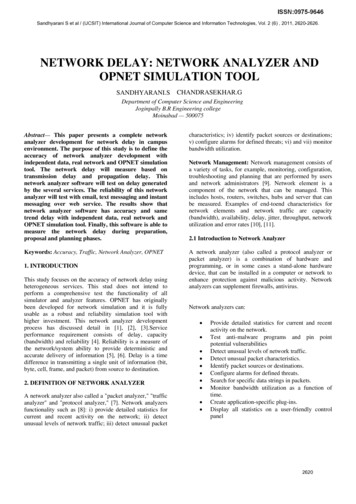
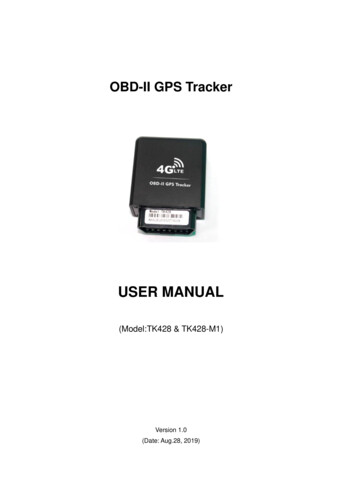
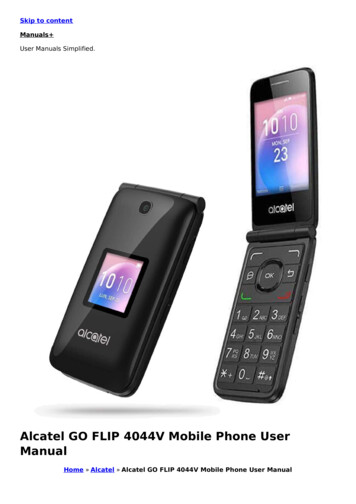

![IEEE 802 CALM Tutorial Part 3 v2.ppt [Read-Only]](/img/17/ieee-20802-20calm-20tutorial-20part-203-v2.jpg)
